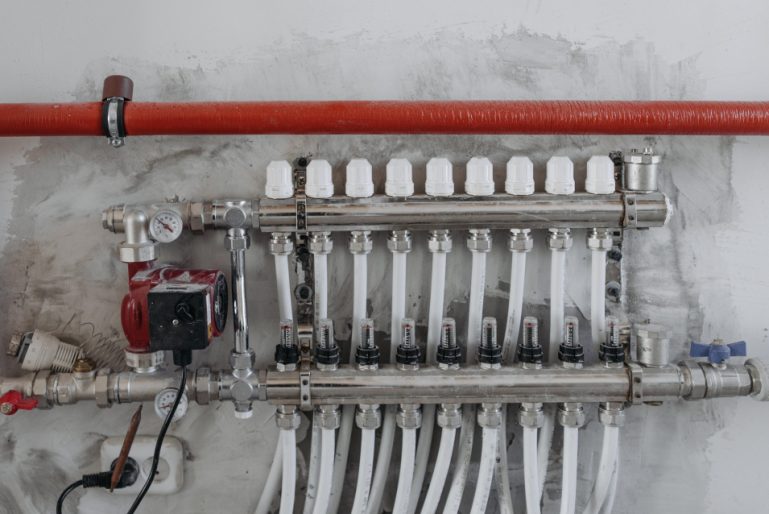In a much-repeated but important axiom, it has long been said that water is the new fire. In the past, risks like fire and theft were more well-known and understood as the more costly insurance risks to Canadian properties, but that is no longer so.
Water creates levels of risk throughout all stages of a building’s life cycle and is a major cause of loss during and after construction. For example, condo floods are one of the most expensive losses for insurers. Everything from the main pipe coming into the building to all the common areas, like pools and fitness centres. Claims due to pipe bursts are through the roof, so to speak. Water is the second most frequent insurance claim and can cost hundreds if not thousands in unnecessary water bills for facilities.
Why it matters
Water gives us life, but it can also create a perilous state for facility managers and people who live and work in buildings. It disrupts families, displaces people, and destroys property. It accounts for 70 per cent of all insurance claims by dollar value, with $7 billion spent annually in North America. Billions of litres of water are spilled annually due to leaks. And while much flooding is nature-based (overland) plenty is mechanical – things such as a slow leak, a burst water pipe, or a failure with municipal infrastructure.
Across facilities in manufacturing, retail, restaurant and grocery, education, and multi-residential, many issues are shared, while some are industry-specific. In certain industries, such as retail and grocery, cost/loss is magnified by the damage to goods as well as significant interruption to business operations during restoration. In hospital and healthcare settings, water damage is detrimental to the welfare of patients.
Are certain types of buildings or industries at greater risk?
All types of buildings are at risk for water damage, but it is predominantly high-rise buildings. These buildings face considerable risk, particularly during the final stages of construction. A pipe may burst early Saturday morning, leaking upwards of 50 to 100 litres per minute of water. When the construction crew shows up on Monday morning, there can be millions in damages, setting back the project months – but with the proper system in place, the water can be immediately shut off, averting much of the loss.
The average claim cost of a single-family home is around $15,000; for a commercial building, it’s $130,000. The more floors and equipment with water running through pipes increases the risk of water damage, and even things like an upstairs neighbour filling the bathtub and forgetting about it can cause damage several floors below.
Examples of major disruptions in high-rise and commercial spaces
One of our clients recently shared that they faced a significant loss in the recent past which involved a burst pipe on the 11th floor of a nearly completed building. The event damaged floors and ceilings and set the project back months, resulting in a multi-million-dollar loss. Another client described a large flood that breached the elevator shafts and the parking lot, costing upward of $500,000 in repairs.
Water detection and leak protection is becoming more of a priority across all industries, as insurance carriers have realized the advantages of encouraging intelligent shutoff systems. The majority of water within a building comes from internal issues (such as appliance failures and burst/leaking pipes), and proactive systems help to considerably reduce the risk of water escape.
What do facility managers need to know about leak detection?
IoT leak protection systems can be installed during construction and in new or retrofit buildings. The technology is easy to install and is supported by insurance companies through in-suite discounts to residents and incentives to buildings.
These systems make facility management easier, providing insights and oversight to a massive threat, all of which requires little maintenance and effort on the manager’s part.
Technology for predictive maintenance and lower operating costs
IoT-enabled technology provides both data and remote capability to facility managers, lowering overall operating costs. During COVID-19 isolations, for example, our system allowed for remote monitoring of buildings that were largely unoccupied due to work-from-home protocols, ensuring that the building was still safe from water damage issues. Further, data analysis provided from IoT technology allows for predictive maintenance and overall better control over appliances and equipment.
Another major challenge in building design is building input materials such as concrete and rebar, which pose connectivity issues for devices that rely on Wi-Fi or cellular technology. Long Range Wide Area Network (LoRaWAN) is a low radio frequency that ensures connectivity in these designs.
Finally, beyond cost and safety, sustainability is a major focus for facility managers and building owners. It is imperative to outfit modern buildings with ESG-focused tools to reduce a building’s water footprint, including those that reduce wastewater and conserve energy used to heat and move the water.
All these challenges require a new and different manner of service for owners and facility managers – something that is based on IoT and has the supporting tech to process all the inputs and keep the vast amount of data organized and useable.
Travis Allan is Chief Executive Officer & President of Eddy Solutions, a North American company specializing in water monitoring and leak detection.








